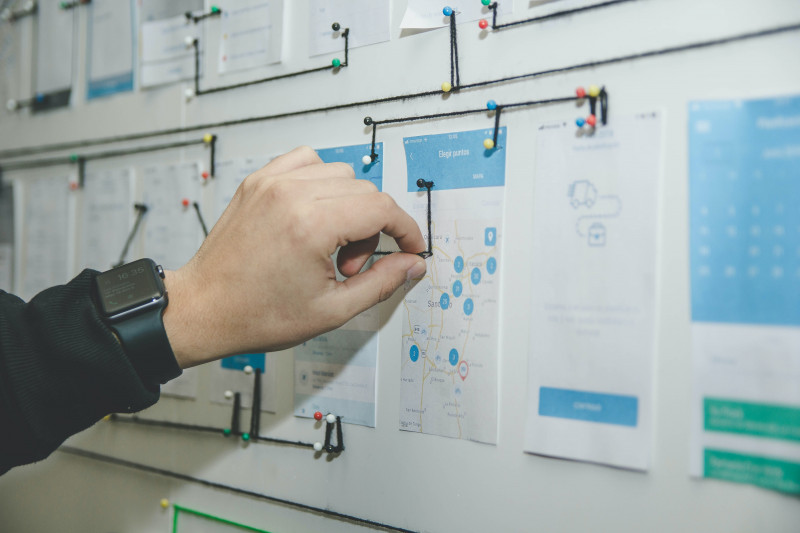Poka-Yoke in service design & user experience
Poka-yoke (ポカヨケ) is a Japanese term that is miss pronounced PO-ka-yo-KAY. It is the use or design of a device or mechanism that assists an operator (or anyone else) in avoiding mistakes. Poka-yoke means “mistake-proofing” (or “inadvertent error prevention”) or sometimes “fool-proofing”. Poka-yoke is a technique that eliminates product defects Muda (無駄, on'yomi reading). It is a process of correcting or preventing defects and errors. This means a product, service, or process does not accept, create, or allow defects to propagate down the line.
Poka-yoke devices and systems are designed to prevent mistakes from happening. It plays a more detective role and tries to eliminate defects as soon as possible. A prevention-based poka-yoke system detects a defect of a physical, functional, or aesthetic attribute and either creates a framework that prevents errors or creates a signal that shows an error has occurred. A detection-based poka-yoke system instantly alerts an operator when a mistake has been made.
What is Poka-Yoke?
It eliminates product defects before they are released to customers, clients or the following user. It's commonly used to prevent manufacturing errors by catching problems before they become costly.
The goal is to eliminate quality issues before they happen! The proper use of poka-yoke is for the process or system to be designed to prevent errors rather than correct them. The philosophy of poka-yoke is to eliminate human failure. This concept is used in all manufacturing, services, and product development where errors occur. Poka-yoke is also effective in eliminating human error and mistakes in long-term processes.
Here are some examples of simple poka-yoke that can significantly impact safety and efficiency.
In the home: Electrical appliances can become damaged and dangerous if plugged in reverse. A simple poke-yoke solution is an electrical plug. Australian electrical plugs can only be plugged in one orientation. It is impossible to plug into the electrical socket any other way due to the orientation of the positive, neutral and earth pins. Additionally, the earth pin is a little longer than the other pins, which means that the earth (a critical safety component in electrical systems) makes contact before any other parts.
In software development: Using poka-yoke in the IT sector is no new. Developers use poke-yoke to support users and prevent mistakes. For example, a common poka-yoke technique in email applications is to provide a warning if the words "see attached" are in the content of the email, and there is no attachment. This helps users to avoid sending an email when they have forgotten to provide an attachment. Another example of poke-yoke is the password strength indicator on the "new password" text entry. This prevents users from creating weak or easily compromised passwords.
In service design: Poke-yoke techniques can also be used in services to prevent mistakes and improve service delivery. For example, in the healthcare sector, the most common poka-yoke technique is asking a patient their name, date of birth and why they are there. This is done at every touchpoint in health practice so errors are prevented and patients receive the proper care they need at the right time. Nobody wants a simple mistake like operating on the wrong patient to result in permanent injury or death.
How is Poka-Yoke used in the practice of service design?
There are many poka-yoke techniques in service design, such as manual checking of inputs or verification of user behaviour. Poka-yoke can be incorporated in many forms and used in a new service design. It can also be applied to existing or traditional services by removing people's ability to make mistakes.
Additionally, if you consider that the goal is to make the entire process or system error-proof, there are many areas where mistakes can be made. However, poka-yoke can be used to prevent mistakes in all these parts of the service cycle. This is why poka-yoke is one of the most critical components in designing a successful customer experience since they cover everything an organisation uses to deliver value to its clients and customers.
Poka-yoke ultimately leads to greater operational efficiency and a significant impact on the bottom line. In an increasingly competitive business environment, organisations and companies are trying to create a sustainable competitive advantage. Service design is a strategy, an approach, or a process designed to achieve the ultimate goal of creating value for customers, employees, partners and shareholders. This value can be in the form of better time-saving, ease and convenience, improved quality, and increased satisfaction. So, using a customer-centred approach to service design can lead to a sustainable competitive advantage.
However, this cannot be achieved without a continuously evolving approach to service design that considers all customer touchpoints. Customer feedback is often a catalyst to further innovate and improve services.
How can Poka-Yoke be applied to customer experiences?
Service design is an established discipline that focuses on improving customer experiences. It involves understanding the customer's journey and designing engaging, consistent, reliable experiences at every touchpoint. An essential service design principle is to put the customer first, understand their journey, and strive to deliver value at every interaction. Continuous improvement methods and applying a service design strategy to every step of service design can help create positive customer experiences.
Designing our services to avoid and prevent errors using poka-yoke is essential in ensuring positive customer experiences. It reduces customer effort and empowers them to complete tasks, saving time and delighting them easily. Poka-yoke also improves overall efficiency and reduces costs since the rework required to fix mistakes is avoided. Poka-yoke also ensures customer safety and can prevent severe or life-threatening situations, as seen in the healthcare example above.
Not only does poka-yoke prevent errors and allows us to recognise human errors and mistakes when they occur. This is its most successful application, as it helps us see where our systems, processes and services are not robust enough and what parts of the service need to be improved.
The quality of the service experience largely influences the customer experience. Many customers will not even engage with a service if it is just so inconvenient or takes too long to deliver value. So, organisations should focus on optimising their service journeys, improving the overall customer experience and designing superior customer experiences. Poka-yoke techniques can help in supporting this aim.
Service design should incorporate as many poka-yoke techniques as possible without diminishing the user experience or the service offering.
Is there such a thing as “dark” Poka-Yoke?
Yes. Using poke-yoke to disempower customers or prevent customers from engaging in undesired behaviours can be a form of dark poke-yoke. Many organisations use dark poke-yoke to prevent consumers from complaining or criticising their products and services, for example, by providing a torturous and circular service request or complaints process that prevents the submission of complaints whilst giving the appearance that there is a process in place to deal with complaints.
In the retail sector, for example, vendors sometimes offer "lifetime guarantees" or "no questions-asked returns". These policies entice customers to purchase and add to the value offered by the vendor. But some vendors provide no avenue to exercise the return or require that the return is made in a far-off city. Often, these vendors use dark poka-yoke techniques to prevent customers from returning products. This leads to poor customer experiences.
And by providing a tortuous looping path, the vendors design the system to increase the likelihood that the customer will give up trying altogether rather than waste their time and frustration trying to get it right. This is useful for preventing customer complaints or returns but goes against co-creation and customer-centred design principles.
How can Poka-Yoke techniques be applied to UX?
Poka-yoke techniques can be used in several aspects of UX design. They are instrumental in delivering a positive and engaging user experience. UX design helps organisations create experiences that are simple, intuitive and convenient for customers. Poka-yoke complements UX techniques by contributing to a positive customer journey and creating a compelling engagement experience.
Poka-yoke techniques complement the human-centred approach in UX designs since they help customers engage effectively with a service or product by minimizing user error and mistakes.
For example, menu buttons in mobile apps or websites should be large and distinguishable from each other to allow users to identify the one they want to minimise user error. Similarly, when typing in a web address in a web browser, the URL bar should be clear and prominent and minimise user error so that customers do not make mistakes when entering an address or website URL.
Adding a confirmation message when submitting changes, such as passwords or credit card details, as well as unintuitive button placement in mobile apps and websites, can lead to customer errors and mistakes.
Mobile applications should be designed with touch gesture targeting in mind. This is important since not all users hold their devices the same way, and not all devices have touchscreens. Making phone numbers clickable from emails allows users to dial their contacts without opening a phone call app or requiring the user to transpose the number into their phone. This helps save time and increases customer engagement with the application.
Can you apply Poka-Yoke in your organisation?
Service design has many benefits, and one of the most crucial is improving efficiencies and productivity and reducing errors. Poka-yoke techniques can be applied in your organisation to create a collaborative environment and provide unique customer value. By incorporating poka-yoke methods into your service design strategy, your organisation can improve its processes, procedures, and day-to-day operations. You can also expect better performance and cost reduction as errors are minimised and the efficiency of the team increases.
By providing an easy and seamless customer experience, you will further improve customer satisfaction and increase the scope for customers to become brand ambassadors, which can help improve your business reputation.
Contact me to learn how Service Design can support your organisation's growth and improve your business service offering, reduce waste and improve human-centred customer experiences








